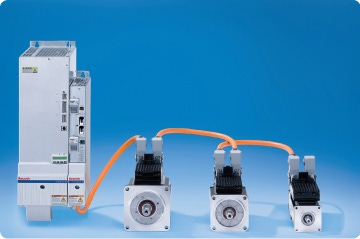February 1, 2010

In the past few years, the concept of integrating servo drives and motors together outside of the control cabinet and directly onto the machine has gained a lot of momentum among design engineers. But how do you know if this style of drive architecture is appropriate for your application?
Here are some basic guidelines to help you in choosing between a traditional servo system and an integrated motor/drive approach.
Traditional Servo System
A major benefit of a traditional servo system, in which all drives are mounted in a cabinet, is that the technology is widely recognized and accepted by industry. A greater variety of options and sizes are available, including shock-proof versions. More I/O is available on the drives and designers have the option of a secondary encoder on the drives, as well.
However, overall costs for a traditional servo system tend to be higher, including engineering time for the cabinet layout, mounting, wiring and installation, and air conditioning units if required for the cabinet. Each motor requires two cables (for motor power and feedback), so on a 10-axis system, you'll need to manage 20 cables pulled through wire ways and cable tracks.
Space requirements are also higher, with the exception of designs in which the cabinet is integrated into the frame of the machine.
Two applications for which a traditional servo system is particularly well-suited are ones that require smaller or larger motors with the machine and when the machine is subjected to heavy shock or vibration (>1g).
Integrated Motor/Drive System
A major benefit of an integrated motor/drive system is the space and cost savings. Moving the drives out of the cabinet reduces the cabinet size and can even help shrink the machine footprint.
Overall costs are also typically lower, as there is less wiring, a reduced component count (and therefore fewer spares) and less engineering time required for installation. That same 10-axis system now requires only one single cable coming from the control cabinet. Eliminating the need to cool the cabinet also avoids the purchase of air conditioning units. I/Os on the motor/drive can also serve the role of a secondary field bus on the machine.
An integrated system typically has fewer options than a traditional servo system, including four I/O per motor, fewer available motor sizes (from 10 to 100 inch-lb continuous torque ratings and 6,000 rpm applications), and less secondary encoder options onboard. Integrated systems, such as Rexroth's IndraDrive Mi, can support up to 20 drives per cable and up to four cable drops per single power supply.
Integrated motor/drive systems are especially suited for modular machine requirements, such as packaging equipment, where line extensions are requested for different products. For example, adding more machine modules to help turn a beverage shrink packer into a tray shrink packer.
Why Not Both?
Note that integrated and traditional drive systems may be mixed and matched in a single application by adding up to 10 integrated motor/drives via a daisy chain cable to traditional drives in a cabinet.
For example, if the machine needs just one high-power motor, the drive for this axis can be used as the dc bus supply for up to 20 integrated motor/drive units. The drive also can be used for an optional encoder interface or additional I/Os, or if you want to use a regenerative power supply or capacitive storage module for energy savings.
For more information on Bosch Rexroth's:
Electric Drives and Controls.
IndraDrive Mi Integrated Drive.
Consider using traditional drives when: | Consider using integrated motor/drives when: |
Your cabinet is already built into the machine frame (and there is no need to consider reducing it) | You need to reduce the machine footprint |
You build different cabinets for different machines and you don't want to change to one cabinet for all machines | You need a modular machine to adapt easily for future growth or custom requests without changing the cabinet |
You require a lot of either very large or very small motor sizes for your application | You want to lower the costs of manufacturing your machine |
You require the motors to be used in an extremely heavy shock or vibration environment | You want to consider using just one cabinet design for all the machine types that you manufacture |
You require a lot of I/O to be distributed down into the drives | You need to meet documented sustainability goals to reduce factors such as machine weight (for freight), air consumption or energy use |

Selecting A Motor and Drive Architecture_B
Click here for a larger version
Selecting A Motor and Drive Architecture_C
Click here for a larger versionAbout the Author(s)
You May Also Like





